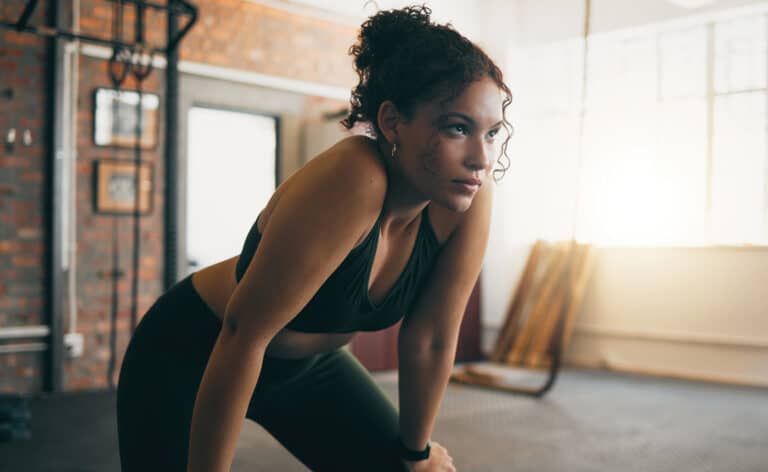By Karen Schwartz
Batavia resident and longtime osteoarthritis sufferer Barbara Ford was only 50 years old, yet she experienced knee pain so severe she had to walk with a cane.
Even after she had total knee replacement in 2012 on her left knee to help soothe the pain, she had to turn down much-cherished shopping trips with her two adult daughters. And walking her two active Australian shepherd dogs, Jamima and Bowie, was totally out of the question. Taking prescription narcotics for pain relief made her nauseated and over-the-counter medications offered little or no relief.
“I thought I would just have the total knee replacement and that would be it—I could move on with my life without the pain I’d been experiencing for so long,” Ford says.
Unfortunately, that wasn’t the case, and she still experienced excruciating knee pain. At the end of a workday as a dental assistant, Ford would often be reduced to tears, and she had to lean against the office walls for stability while trying to make her way to her car.
A year after her surgery, with no relief from her pain, Ford was forced to use a walker and that cane to get around. She tried a variety of nonsurgical options, including cortisone shots, but nothing seemed to work long term.
Then, in April 2014, she visited Rush University Medical Center, where, on an out-patient basis, pain management specialist Timothy Lubenow, MD, performed a minimally invasive procedure on her knee, called Coolief for Genicular Neurotomy.
Manufactured by Halyard Health (formerly Kimberly-Clark Healthcare), Coolief is a nonsurgical procedure that uses cooled radiofrequency energy to safely target the sensory nerves causing pain. It circulates water through what’s referred to as a pain management generator while heating nervous tissue to create a treatment area that is larger than in conventional pain management treatments.
No incision or general anesthesia is required, and the procedure lasts under an hour. Patients are able to resume normal activities within a few days, and results last anywhere from three to 24 months.
“I’ve been using [this] procedure at Rush for four years,” Lubenow says. “Initially, I was using it to treat osteoarthritis of the spine, and it’s been about two years [since] its use has been extended to treat osteoarthritis of the knee and hip joint. Those are the most common places it’s used to treat pain.”
“It’s a great alternative for patients who are too young or have additional medical conditions or comorbidities that make knee replacement surgery too high of a risk,” he adds. “People who are 40 or 50 years old are too young to get a knee replacement, and people who are older, say age 80, can get the procedure because it’s just done under mild sedation. The procedure provides patients with long-lasting pain relief, and I don’t have to prescribe oral pain medication.”
Eugene Lipov, MD, is another Chicago-area physician who uses the Coolief procedure to treat osteoarthritic pain. Director of research at Northwest Community Hospital in Arlington Heights and medical director of Advanced Pain Centers (with offices in Oak Brook and Hoffman Estates), Lipov has been using Coolief for about eight months.
“There are risks to surgery,” he says, “and there are people who are old and sick and not good candidates for knee replacement surgery. “The youngest patient I’ve done the procedure on was 32; the oldest was 90. There is [reduced] recovery time, no [large amounts of] blood loss, and it’s much simpler than knee replacement. People in their mid-eighties don’t want to go through knee replacement surgery,” he says.
But, as with any medical procedure, there are risks involved.
“Whenever you do an injection, you can get some bleeding,” Lipov says. “And whenever you burn nerves, you can get neuritis or inflammation of the nerves. But there are ways to prevent that, and the inflammation just feels like a sunburn.”
After having the procedure done on her left knee, Ford experienced a “very minor, dull pain.” But within three weeks, she was able to walk without a cane or walker. She could shop with her daughters and walk her dogs and even enjoyed a vacation in Mexico.
“My husband and I were able to walk on the beach, go boating and ziplining and walk through dirt paths,” she says. “And I am now dancing!”











